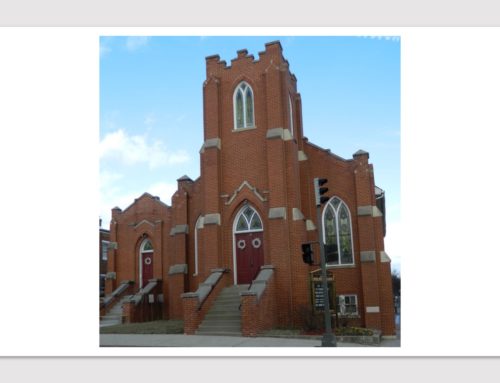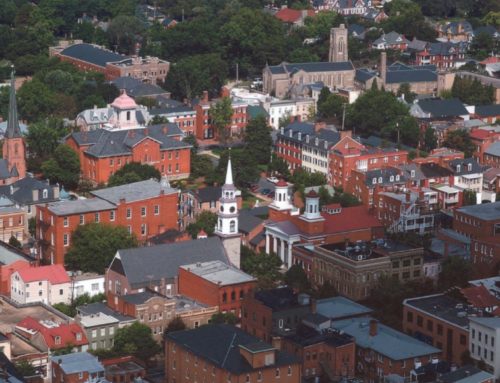Excerpt from the Frederick News-Post:
A downtown Frederick property that, until recently, housed a dilapidated, termite-ridden log cabin will get a new house built on it under construction plans submitted to the Historic Preservation Commission.
Local builder Ron Hemby, owner of Hemby Custom Homes, has submitted preliminary design plans for a 2½-story house on the now-vacant lot at 107 E. Fifth St.
The design will incorporate various cabin elements salvaged in the demolition — flooring, doors, timbers reused as a fireplace mantel, and bricks in the foundation elevation. “We thought it would be nice to keep that history,” Hemby said. “It’s marketable, too.”
The city Historic Preservation Commission was scheduled to review those plans in a workshop discussion on Thursday. A public hearing and vote will take place at a subsequent commission meeting.
New construction in the Frederick Town Historic District is subject to the city’s historic preservation guidelines.
The crumbling 19th-century cabin that sat in disrepair for decades on the property was demolished in December. Its owner, Habitat for Humanity of Frederick County, secured the HPC approval necessary for the demolition in August, after a series of public hearings marked by heated debate among local residents, commission members and city planners who differed on whether the cabin was worth preserving.
The approval was tied to several requirements for the demolition, including documenting the structure for archival records and allowing a six-month archaeological survey period before the property can be sold or redeveloped.
Hemby, whose company recently built three other houses on East Fifth Street, indicated his interest in buying the property before the public hearings.
A contract for the $45,000 sale was signed between Habitat and Hemby after the demolition was approved. The purchase will be final after the archaeological review is completed, according to Ron Cramer, Habitat’s executive director.
“Habitat doesn’t want to just unload it to Mr. Hemby and walk away,” Cramer said.
The two groups have worked together to select and pay for a consultant to study the site’s archaeology, but the process has been more challenging than expected, Cramer said.
The requirements for the review include extensive research, including research on the transfer of the deed for the land. An initial $15,000 quote that Habitat and Hemby received from one consultant for the work seemed “exorbitant,” Cramer said.
“The first price was a good bit more than what I paid for the survey of the house up the street,” Hemby said, referring to one of the other East Fifth Street properties his company developed.
They plan to seek estimates from other potential consultants before choosing one to complete the survey. The length of review time remains uncertain, dependent on the relative amount of information determined from the archaeology.
“We really don’t know what they’re going to find there,” Cramer said.
In the meantime, Hemby has drafted drawings depicting the house his company would build once he secures the necessary approvals and the survey ends. The application submitted to the HPC details a two-story house with a front porch and rooftop deck.
The size — 20 feet by 60 feet — is intended to reflect the footprint of the cabin that once stood there.
Once constructed, a process Hemby estimated will take five or six months, the property will be marketed for sale in the high $300,000s to low $400,000s, similar to the asking price for other Fifth Street houses he built, he said.
With many variables still in play, Hemby was reluctant to give a firm completion date for the project. He hopes to finish by the end of the year.
The process has been slow, Cramer said, but the end result will be worth the wait.
“I think it’s going to be good for the neighborhood,” Hemby agreed.



